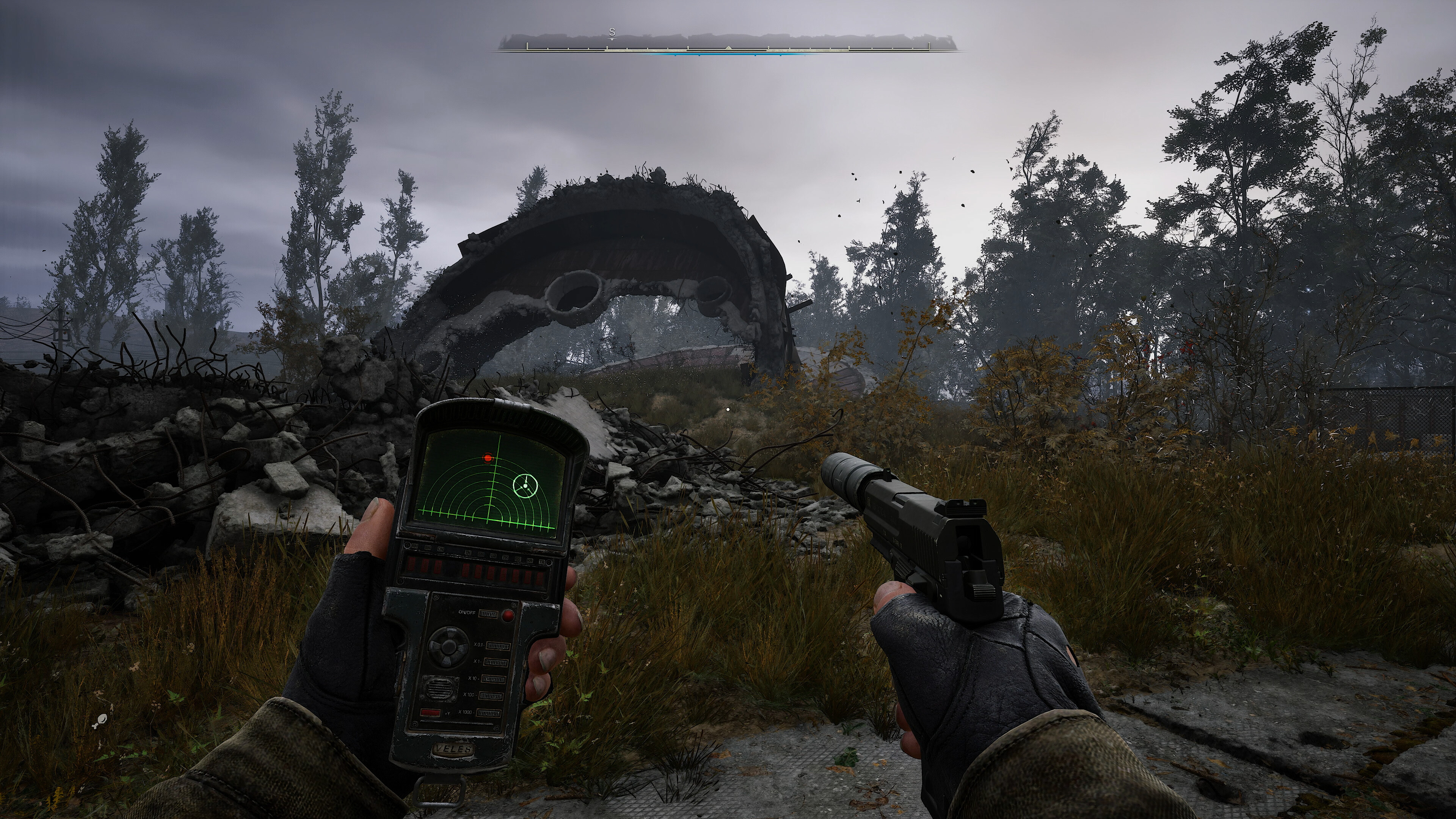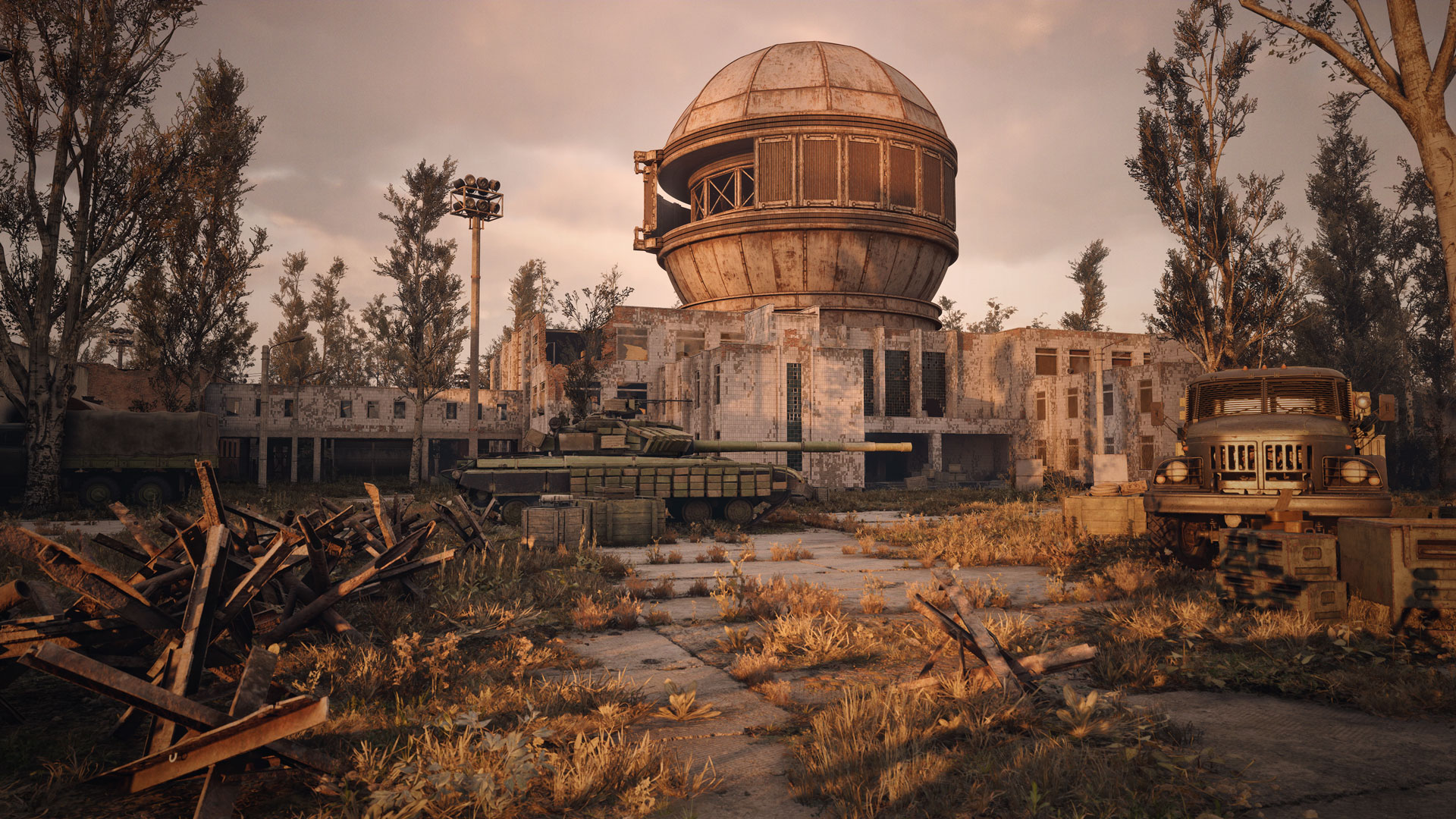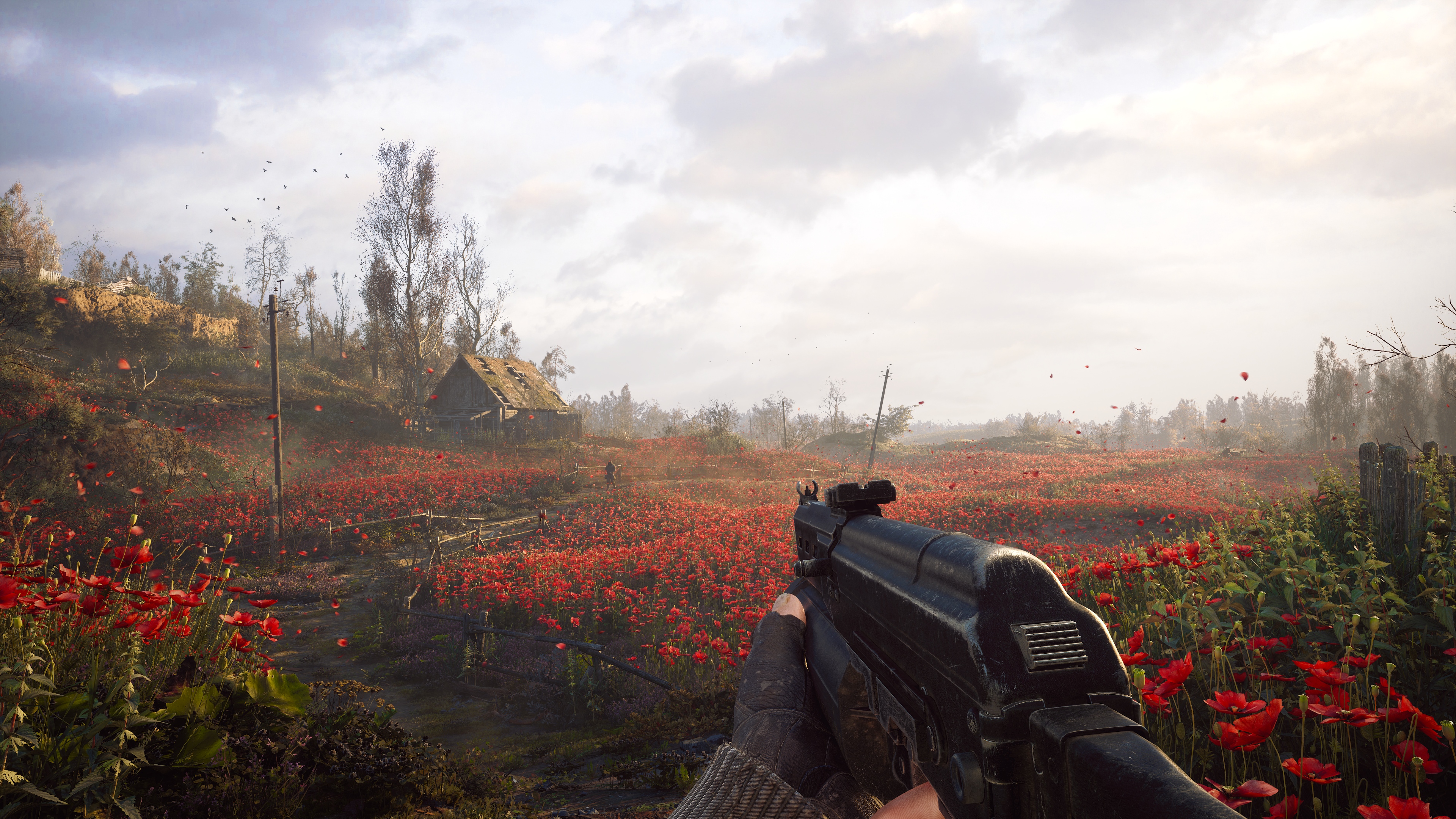GamesRadar+ Verdict
For fans of hardcore shooters or punishing post-apocalypse games, Stalker 2: Heart of Chornobyl is truly incomparable. Unfortunately, due to a litany of bugs, it's the greatest game you shouldn't play right now. Give it some time, and this will be one of the best survival experiences you'll ever play – but until then, only the series' biggest fans should take the plunge.
Pros
- +
Gunfights are phenomenal
- +
The Zone is an atmospheric, one-of-a-kind open world
- +
Very challenging, making this perfect for anyone who likes their survival games with grit
Cons
- -
Riddled with bugs that range from immersion-busting to game-breaking
- -
Weapons and gear degrade too quickly, making it hard to stick with your favorites
- -
English voice acting is a little inconsistent in quality
Why you can trust GamesRadar+
Stalker 2: Heart of Chornobyl is desperate to kill you, and it will often succeed. Some deaths are inglorious: a bandit may shoot you when your back is turned, or a pack of wild dogs will decide to make you their lunch. But few of its post-apocalyptic dangers are as dramatic or lethal as emissions, storms of psionic energy that turn the sky blood-red and shake the world so hard you'll think it's coming apart. Fail to get indoors before an emission kicks off, and your life is measured in seconds.
These emissions are deadly, yes, but they're also hypnotically beautiful. While taking shelter in a disused gas station, abandoned along with the rest of The Zone due to the Chornobyl nuclear power plant meltdown, I couldn't resist sidling up to an open window and watching its red hues and streaks of lightning scour the land. Low on supplies from a shootout with hostile scavengers, I sat and watched the emission rage whilst planning my next move. In moments like this (and there are many others) Stalker 2's atmosphere is incomparable. But it's a shame – a sincere, heartbreaking shame – that bugs and technical issues shatter that immersion at every turn, making this the best but most broken game I've played all year.
In The Zone

Release date: November 20, 2024
Platform(s): PC, Xbox Series X|S
Developer: GSC Game World
Publisher: GSC Game World
You don't need to have played past Stalker games to dive into Heart of Chornobyl, but newcomers to The Zone – an irradiated land of impossibilities in Ukraine – will find themselves tested by its brutality. That goes double for protagonist Skif, whose first foray into The Zone results in him being ambushed and left for dead.
Though your ultimate goal is to bring justice to Skif's attackers and uncover The Zone's secrets, merely surviving is a much more pressing concern. When the game begins in earnest, you've got only a pistol and smattering of bullets to arm yourself with; along with a handful of bolts used to detect miniature unnatural disasters called anomalies. Throw in roaming bandits, mutated wildlife, warring factions and the occasional psychic monster, and that teensy-tiny pistol has its work cut out for it. As for Skif, he'll die in just a couple of gunshots, needs to eat semi-regularly, and can have his poor brains scrambled by said psychic horrors. In an example that's almost poetic, if you strictly follow the dirt trail that leads to the game's first town, Zalissya, you'll walk off a sudden ledge and die.
This vulnerability makes combat tense and nervy. Fighting against humans means constantly two-stepping in and out of cover, hastily trying to line up headshots with one eye glued to your health bar to watch out for bleeding wounds. But for the most part, rival stalkers and bandits are just as squishy as you are. Earlier in the game, this leads to some darkly satisfying shootouts that conclude in seconds – even after thirty hours, I'm still grinning at the memory of killing four bandits with a cheap pistol before any of them had a chance to shoot back. Later on, when everyone's toting fancy armor and military-grade guns, shootouts tend to last a little longer – their outcomes determined by clever maneuvering instead of whoever has the quickest draw. But they remain brutally difficult, and you'll often survive an encounter wondering how you're still standing.

It's a breathless throughline that makes Stalker's gunfights best-in-class, but battling mutants is a lot less fun. Fending off their melee attacks is a limp game of whack-a-mole, as smaller enemies like feral dogs will often clip through your legs and run away after attacking. Facing off against tentacled Bloodsuckers should be more exciting, but in reality they just soak up more bullets and turn invisible between swipes. It's painfully dated, and lacks any of the texture that defines Stalker's hectic shootouts.
These encounters feel even more jarring because they stick out in one of the most engrossing open worlds I've ever explored. Radiation and psionic energy have warped the Ukrainian landscape in new and dramatic ways: between verdant green shrubland and plodding swamps are poppy fields that lull visitors into an eternal sleep, vast crimson forests, and long-abandoned brutalist concrete buildings. It's treacherously pretty, as The Zone is pocked with anomalies – warped pockets of energy that can toss you like a ragdoll, ignite anything in range, or lash you with electricity. Just as your Geiger counter will crackle into life when radiation levels are high, a second device will beep when an anomaly is near. This means that you can never really drop your guard (remember that path to Zalissya?) and as a result you'll wander The Zone with cagey admiration, ogling its vistas whilst nervously watching for telltale ripples in the air that mark an anomaly.
Weekly digests, tales from the communities you love, and more
Rad-ical


GSC Game World's Zakhar Bocharov tells us of The Zone's harshness: "It's a level of freedom that you can explore yourself, as long as you can survive in this world of hard rules."
It's immersive enough that you'll come to appreciate the journey more than the destination – and there are plenty of them. Besides Stalker 2's main quest, you can find side quests both on your travels and within settlements, where fellow stalkers may ask for your help or bartenders have generic bounty work to offer. There's a practical element to taking optional missions: money. The Zone's digital currency, Coupons, are hard to come by but essential for staying topped up with high-quality ammo and gear upgrades. At one point I thought I'd accumulated plenty of ammo, medicine, and food to reach the credits with; but when better-armored enemies and tougher mutants start appearing more frequently, I burned through it all and realized that cheaper ammo – which I still had plenty of – no longer did its job as effectively.
This leads to a wonderful balance where you'll probably want to take a few odd jobs every time you find a new town. That's partly to make sure you've got money to pay for more supplies and repair gear that degrades a little too quickly, but also because many of the optional missions are fantastic. One of my favorite moments in the game involved helping to save a town I'd grown fond of, arriving just in time to help fend off their attackers in a desperate shootout before pitching in with its residents to prepare for the next wave. Despite having all the gravitas of a main story mission, it was entirely optional. Just as much can be said for smaller jobs like killing nearby thieves or retrieving valuables, which are good excuses to explore corners of The Zone you may otherwise walk past.

However, the real drama comes from Stalker 2's ludicrously ambitious main quest. Numerous factions war over the region's future, and you'll need to determine how that goes across a branching story. The Ward are a bunch of militarized fascists who want to rid the world of The Zone for good, while Spark – a less-organized gaggle of Stalkers – have come to almost revere The Zone, and fight to preserve it. Throw in ethically dubious scientists from the "mainland" and a commune of former cultists, and there are plenty of agendas that vie for Skif's allegiance. You're frequently forced to choose between these groups, and these decisions have tangible consequences. After pissing off The Ward I couldn't safely travel to certain areas, while their wandering patrols around the world would try and kill me on sight. Even a couple of scheming Spark members – who I was meant to be working with – tried to ambush and kill me, purely because I helped The Ward once much earlier in the game. Stalker 2 does a fantastic job at recognizing your choices and branching the main quest around them, with The Zone itself feeling livelier for its factions' constant back-and-forth.
Not an anomaly

Stalker 2, in its current state, has too much baggage to overlook
Unfortunately, Stalker's many feats are held back by a staggering amount of bugs that make recommending it in its current state incredibly hard. At every turn, there's something that breaks your immersion. Sound issues plagued my playthrough, as footsteps would disappear, noises would clip in and out of existence, and my guns constantly stopped making any sound whatsoever. Bodies and loose clutter often clip noisily around buildings, killing any tension you're meant to feel. Enemies would teleport around shootouts or freeze upright and wait for me to shoot them, sometimes spawning beneath the earth or within inaccessible buildings. The latter issue broke several quests for me, as tasks to kill everything in an area were impossible to finish and required frequent reloads to try and work around.
Issues with AI became more prominent the further into Stalker I got, as many enemies seemingly forgot they were meant to be killing me. These bugs also make it hard to tell when something is working: is there still a killable enemy I haven't found for this quest, or has Mr Stalker decided to become one with the concrete wall again? Likewise, AI detection fluctuates between hawkish vigilance and willful ignorance, which makes relying on stealth pointless.
As someone who adores the original Stalker trilogy, jank and instability are issues I'm all too familiar with. But Stalker 2, in its current state, has too much baggage to overlook. It's worth noting that there is a day-one patch in the works – so some of these issues may already be fixed by launch – but given I can only make a recommendation based on the game I have, it's hard to suggest anyone wades into The Zone without knowing what they're in for. Even with these bugs, Stalker 2 is the best hardcore survival shooter I've played, and few settings can live up to The Zone's beauty or bleakness. But if waiting out emission storms has taught me anything, it's that patience is a virtue. Give Stalker 2 some time to get its anomalies in order, and you'll get to experience this gem without having to work so hard for it to be a blast.
Stalker 2: Heart of Chornobyl was reviewed on PC, with a code provided by the publisher.
Looking for more? Our best survival games list will point you towards some similarly unfriendly plays. Or want more power? Then our best FPS games might be more what you're looking for!

Andy Brown is the Features Editor of Gamesradar+, and joined the site in June 2024. Before arriving here, Andy earned a degree in Journalism and wrote about games and music at NME, all while trying (and failing) to hide a crippling obsession with strategy games. When he’s not bossing soldiers around in Total War, Andy can usually be found cleaning up after his chaotic husky Teemo, lost in a massive RPG, or diving into the latest soulslike – and writing about it for your amusement.



